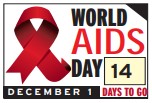How to fight stigma against HIV-positive individuals
Stigma starts with the person themselves, in what is described as self-stigma. This involves hating yourself, everyone, or anything around you.
Uganda Police health services team conducting screening and testing for TB, HIV and Malaria.

NewVision Reporter
@NewVision
__________
Currently, Uganda has 1.4 million people living with HIV.
If you were to sit with all of them, you would get more than 1.4 million stories of stigma because each of them has faced it several times.
Stigma starts with the person themselves, in what is described as self-stigma. This involves hating yourself, everyone, or anything around you.
The other form of stigma is from the surrounding environment or people. Enacted stigma includes discriminatory behaviour through violence, exclusion, blame, and other behaviours that place people at a disadvantage socially, economically, and in their pursuit of health and well-being.
Anticipated stigma refers to the extent to which people expect they will experience prejudice and discrimination from other people.
Internalised stigma includes negative attitudes and feelings that someone with HIV may have that are directed towards themselves.
Dr Juliet Nakku, the executive director of Butabika National Referral Mental Hospital, says HIV stigma is one of the driving factors in some of the cases of mental illnesses that they receive.
She advises that this can only be solved through counselling from health experts before and after the HIV tests are done.
Stella Kentutsi, the executive director of the National Forum of People Living with HIV/ AIDS Networks Uganda (NAFOPHANU), noted that although HIV stigma is still high, it has greatly reduced because of the many awareness programmes.
“A study we did in 2019 shows that external stigma, which includes physical attacks, verbal abuse, and gossip, has reduced from 60% to 30%.
However, many cases of internal stigma persist up to date, where one feels they are not worth living just because they have HIV. Others are harassed for having sex, having children, or associating with the rest,” Kentutsi remarked.
She said the biggest stage of stigma is when one has just discovered they are HIV-positive.
With time, especially after good counselling, care, and love, it reduces as a person gets used to life with HIV.
According to the 2019 HIV stigma index report, the stigma of being excluded from social gatherings and physical activities, as well as verbal harassment, has reduced from 50% in 2013 to the current 24%.
However, around one-third of people still hold discriminatory attitudes towards people with HIV.
Health care providers and policymakers can take concerted actions to support people’s transitions to resisting stigmas.
They can facilitate supportive and anti-oppressive health and social service systems that address medical care as well as basic needs for food, shelter, and income, as well as positive social and community connections.
Kentutsi advises people living with HIV to come out publicly and declare their status as a way of reducing stigma.